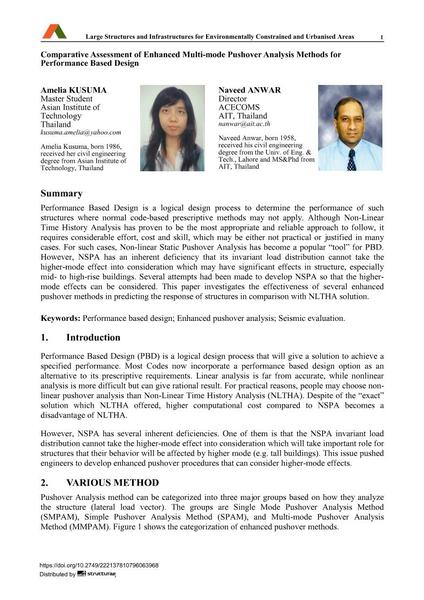Comparative Assessment of Enhanced Multi-mode Pushover Analysis Methods for Performance Based Design

|
|
|||||||||||
Détails bibliographiques
| Auteur(s): |
Amelia Kusuma
Naveed Anwar |
||||
|---|---|---|---|---|---|
| Médium: | papier de conférence | ||||
| Langue(s): | anglais | ||||
| Conférence: | IABSE Symposium: Large Structures and Infrastructures for Environmentally Constrained and Urbanised Areas, Venice, Italy, 22-24 September 2010 | ||||
| Publié dans: | IABSE Symposium Venice 2010 | ||||
|
|||||
| Page(s): | 840-841 | ||||
| Nombre total de pages (du PDF): | 8 | ||||
| Année: | 2010 | ||||
| DOI: | 10.2749/222137810796063968 | ||||
| Abstrait: |
Performance Based Design is a logical design process to determine the performance of such structures where normal code-based prescriptive methods may not apply. Although Non-Linear Time History Analysis has proven to be the most appropriate and reliable approach to follow, it requires considerable effort, cost and skill, which may be either not practical or justified in many cases. For such cases, Non-linear Static Pushover Analysis has become a popular “tool” for PBD. However, NSPA has an inherent deficiency that its invariant load distribution cannot take the higher-mode effect into consideration which may have significant effects in structure, especially mid- to high-rise buildings. Several attempts had been made to develop NSPA so that the higher- mode effects can be considered. This paper investigates the effectiveness of several enhanced pushover methods in predicting the response of structures in comparison with NLTHA solution. |
||||
